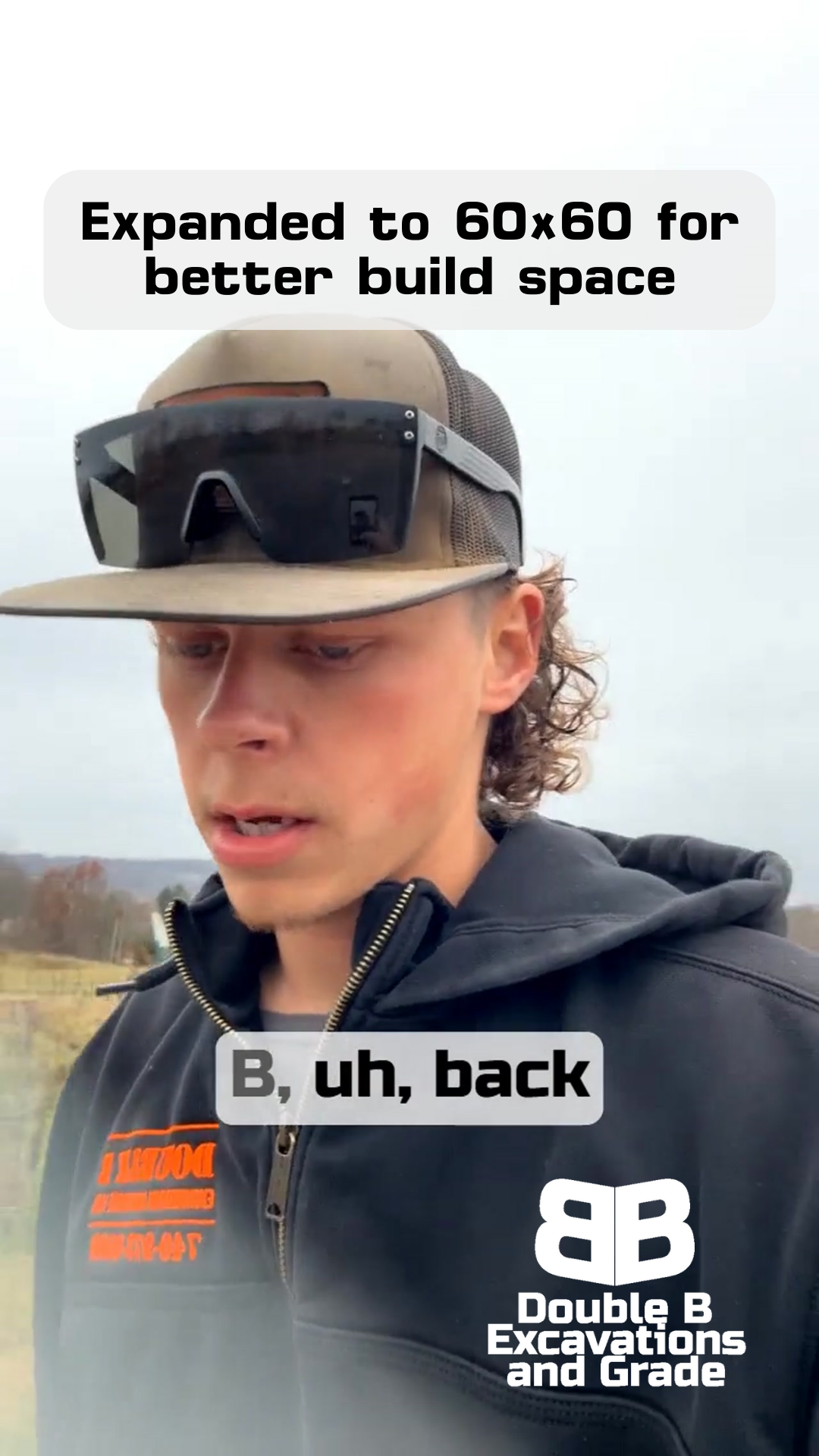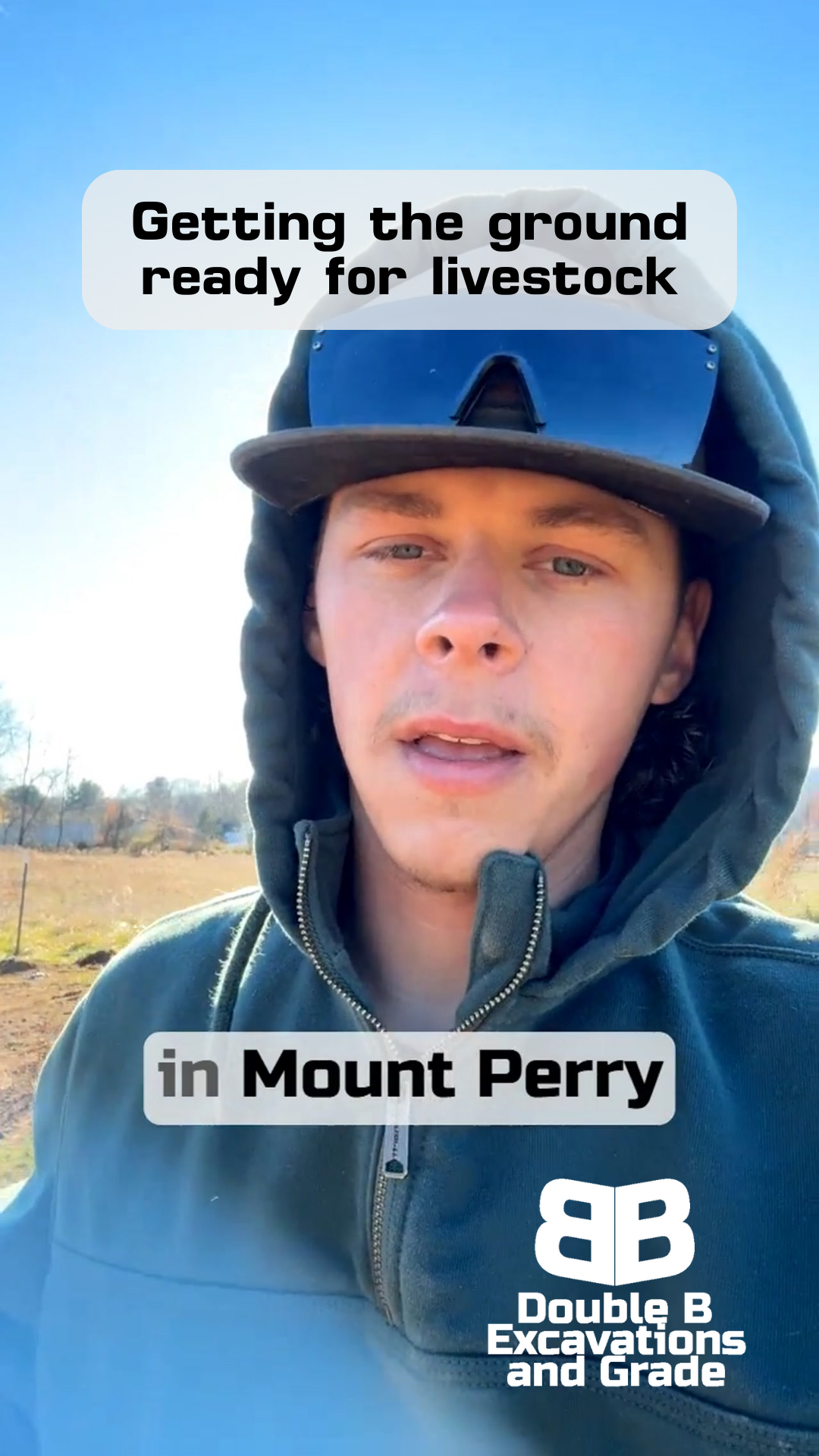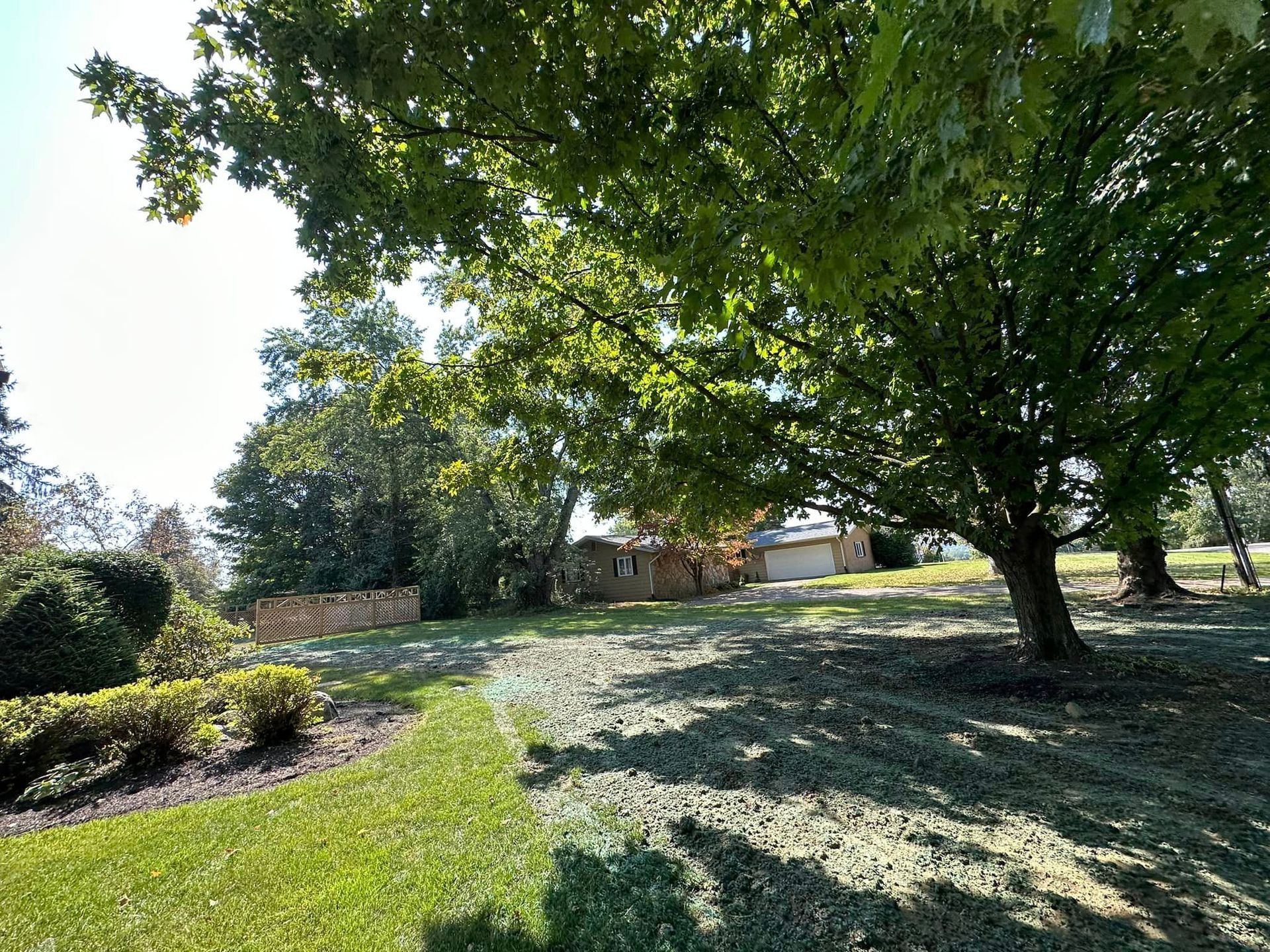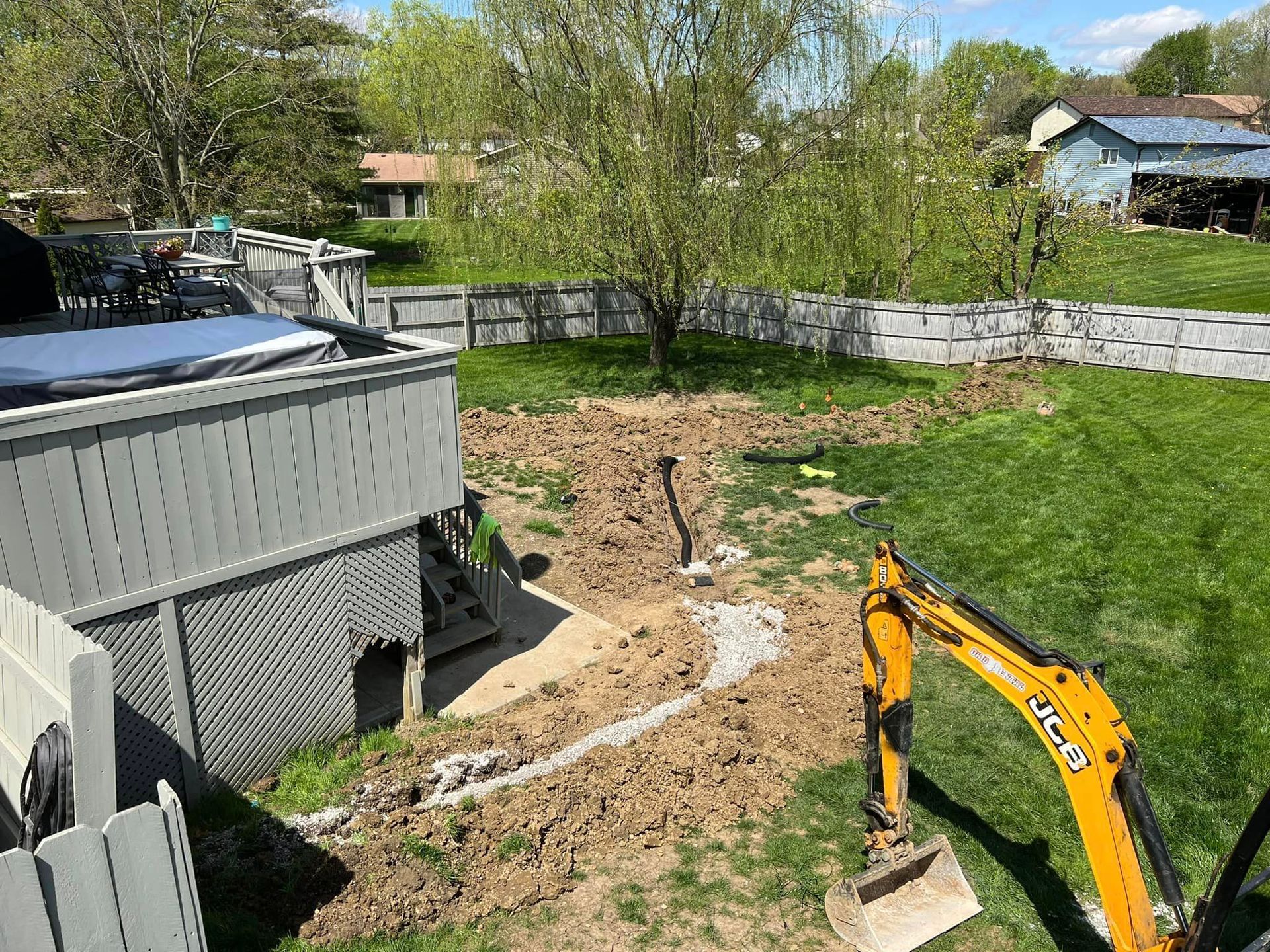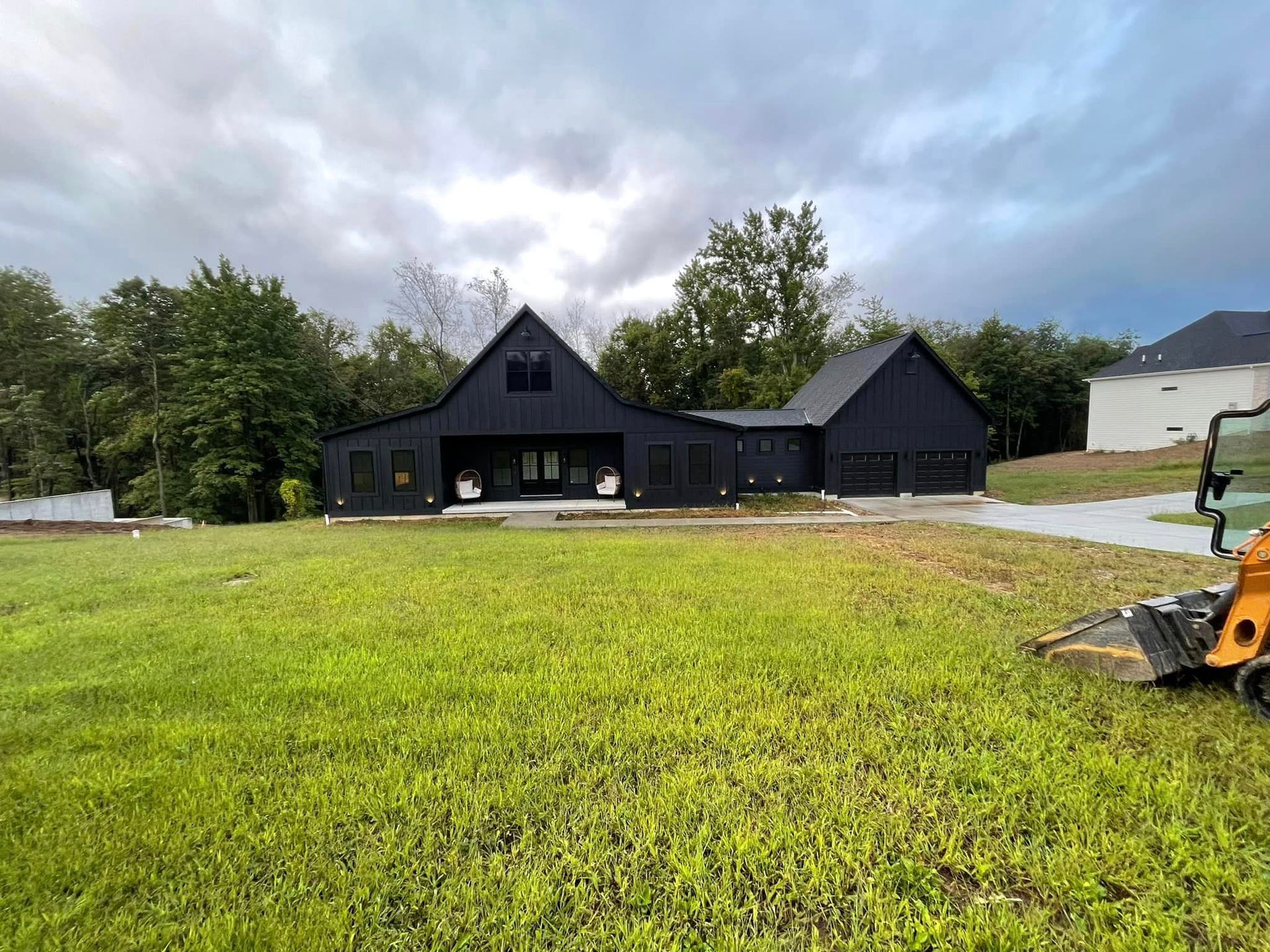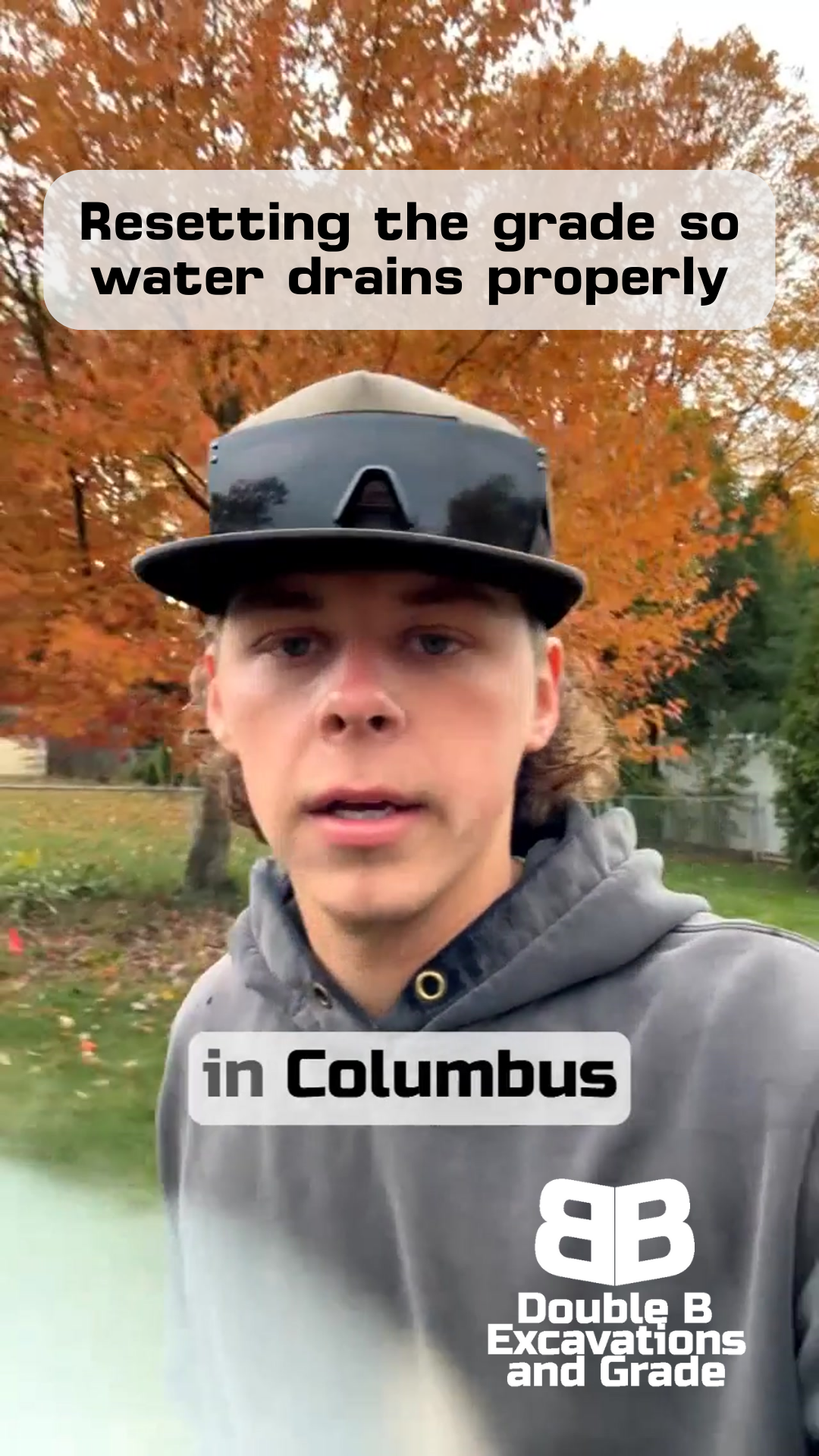Why Proper Drainage Slope Matters: Insights from a Lancaster Project
Double B Excavations & Grade LLC
Getting the Slope Right
WHY EVERY INCH OF DROP COUNTS IN DRAINAGE WORK
When it comes to drainage work, details matter.
This morning in Lancaster, we're looking at a problem we see all too often - water damage around the foundation because downspouts aren't doing their job properly.
It's not just about connecting pipes and hoping for the best. Every drainage project is a puzzle where each piece needs to not only fit but flow correctly.
The key to solving drainage issues? It's all about the slope - what we in the business call "fall."
Get it wrong, and you're just moving the water problem from one spot to another.
Get it right, and you're protecting your home's foundation for years to come.
Welcome to Double B!
Project Overview
This Lancaster project is a perfect example of why drainage work takes careful planning. We're dealing with multiple downspouts that need to be connected into one main line, with utilities to work around and existing water damage that needs addressing. The current setup is literally eating away at the foundation - you can see the deterioration plain as day.
Our challenge here isn't just connecting pipes. We need to:
- Connect two separate downspouts into one system
- Work around existing utilities without disrupting service
- Create enough slope for proper water flow
- Add a topside swale to direct surface water
- Keep the starting point shallow while still getting enough drop
The current situation shows exactly what happens when drainage isn't handled right. The water's not moving away from the building like it should, and years of improper drainage have taken their toll on the foundation.
Understanding Drainage Slope
Let me break down what we mean when we talk about "fall" in drainage work. It's pretty simple - water flows downhill, right? But here's what most people don't realize: even a small mistake in slope can turn your drainage system from a solution into a problem.
Think about it like this - if your pipe is too flat, water just sits there. Too steep, and you might create erosion issues or end up with pipes that are too deep at the exit point. What we're looking for is that sweet spot where water flows consistently without creating new problems. On this Lancaster job, we're using a laser level to get it exactly right. This isn't the kind of thing you can eyeball and hope for the best.
Real-World Application
Here's where the rubber meets the road. On this morning's project, we're starting pretty shallow near the house - we have to, because of where the downspouts connect. But we still need enough slope to get that water moving away from the foundation. This is where experience really counts.
We're mapping out the whole route before we dig a single trench. The laser level Easton's using isn't just for show - it's telling us exactly how much fall we've got to work with. When you're dealing with multiple connection points and underground utilities, you need to know your numbers are right before you start moving dirt.
One thing we've learned over the years: it's better to spend extra time planning than to discover you don't have enough slope when you're halfway through the job. That's why we're out here early, measuring twice and making sure every calculation is spot-on. Because at the end of the day, water only flows downhill - and we need to make sure it's flowing in the right direction, at the right speed, to the right place.
Problem-Solving on Site
Out here in Lancaster this morning, we're showing you exactly how we handle these challenges. The utilities aren't just marks on the ground - they're puzzle pieces we need to work around. That's why we start early when it's cooler - clear minds make better decisions, especially when you're plotting drainage routes around gas and water lines.
The topside swale we're adding is a perfect example of thinking ahead. Sure, we could just focus on the downspouts, but what about surface water? By adding this swale, we're creating a backup system that guides any overflow around the building and toward the culvert. It's about solving today's problem while preventing tomorrow's headaches.
Best Practices & Solutions
Here's what years of drainage work has taught us:
- Start early when temperatures are cool and minds are fresh
- Use the right tools (that laser level isn't just fancy equipment - it's essential)
- Plan for the whole water flow, not just the obvious problems
- Never guess when it comes to slope - measure, then measure again
- Think about future maintenance when planning your route
These aren't just guidelines - they're lessons learned from hundreds of projects just like this one in Lancaster.
Looking Forward
When we wrap up this project, what looks like "just some pipes in the ground" will actually be a carefully engineered system that protects this Lancaster property from water damage for years to come. Every slope, every connection, every bit of fall has been calculated to work together.
If you're seeing signs of water damage around your foundation, don't wait until it gets worse. Those deteriorating spots we found this morning didn't happen overnight - they're the result of years of improper drainage. The good news? With proper planning and installation, these are preventable problems.
Need someone to look at your property's drainage in Lancaster or central Ohio? We're always happy to come out early (you know we're up anyway) and take a look. Because when it comes to protecting your foundation, every inch of slope matters.
